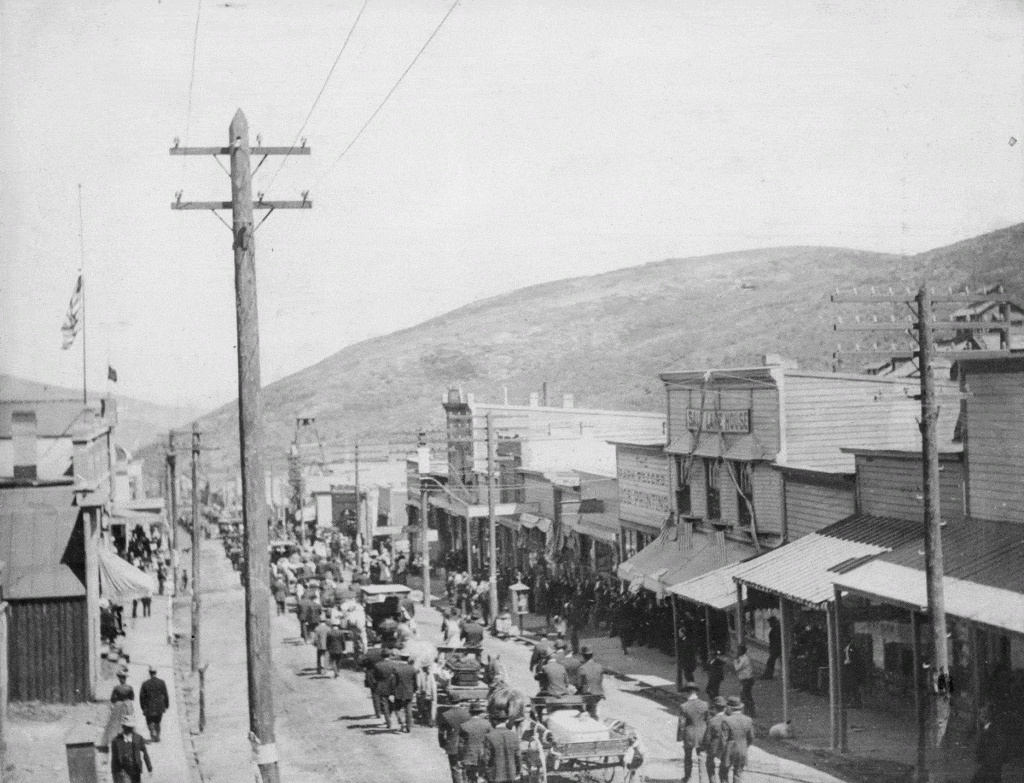At 11:20pm, July 15, 1902, a powder magazine stored underground at the Daly West mine exploded. At the 900 foot level Hennessy, a shift boss, heard the “smothered report”; at the surface, the hoist engineer felt a tremor in his engine. These were the first and only two indications of what would become Park City’s worst mining disaster.
Hennessy came to the surface to report an explosion at an unknown level. He and two volunteers descended to investigate. After detecting gases at the 1400 foot level, Hennessy ordered everyone out of the mine.
One full hour elapsed from the time of the explosion to the time the first body was brought to the surface. John Nimmo, foreman on duty, joined the search party to direct the rescue efforts. At 12:30am, the alarm was sounded and the rest of Park City awoke to the news.
Deadly gases continued to accumulate, overwhelming many of the rescuers. While the initial explosion killed two men, thirty-two more died from asphyxiation after the fact. Nimmo kept tabs on the rescuers, closely monitoring their health. “With every cage of the dead,” the Park Record reported, “some one of the rescuers was sent up overpowered by the gases.”
Bodies and survivors were brought to the surface continuously for over five hours. But at 6:00am, John Nimmo refused to let the rescue teams descend again. It was a difficult decision and he tried to placate the enraged crowd. It was his “duty not to allow live men to go after the dead if the living ones also were to perish,” he tried to explain.
Eight men protested. They wanted to get Johnnie McLaughlin, a twenty-year-old who’d joined the search parties and gotten lost below. The men argued that they knew exactly where to find him. Nimmo held firm for forty-five minutes before yielding.
The team recovered McLaughlin alive and brought him to the surface but he died shortly thereafter.
The reaction of the crowd was “almost open mutiny.” Threats against Nimmo “bordered on the violent nature,” including the “alarming” threat of lynching. The police were called in to mitigate the situation.
Angry and looking for someone to blame, Parkites pointed fingers at Nimmo. “The refusal of Nimmo to permit McLaughlin’s friends to go into the mine after him overshadowed every other feature of the disaster” for days afterward, reported the Salt Lake Herald. A special inquest was called.
Forty witnesses – all involved in search parties – were interviewed. Thirty had passed out while working and all testified that “the gas was much worse than anyone thought.” In the end, however, the inquest ruled that, though Nimmo thought he was doing his best, McLaughlin would have lived had Nimmo allowed the men below.
Nimmo had made a tough call. Though McLaughlin died, many others were likely saved. The town recovered and eventually their anger toward the foreman faded. Legislation prohibiting underground storage of explosives was passed in 1903, a direct result of the disaster. Nimmo died of silicosis (“miner’s consumption”) in 1911.

Credit: Park City Historical Society and Museum